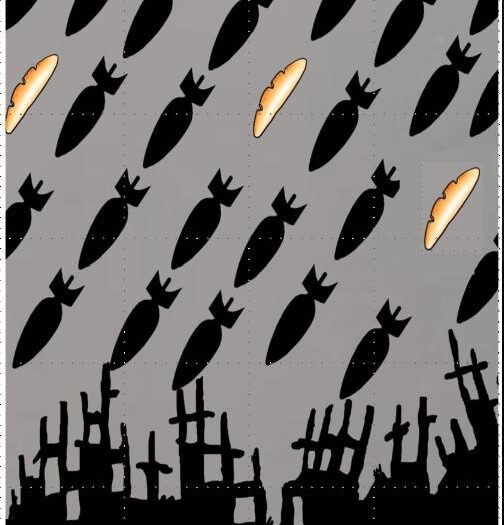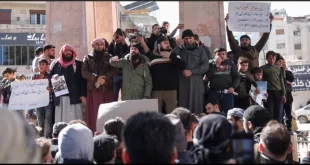by Paul Larudee
The airdrops in Gaza began as a Jordanian project to resupply its small field hospital, established
in 2009, in Tel al-Hawa in northern Gaza in early November, 2023. Toward the end of
November, Jordan established a second field hospital in Khan Younis, southern Gaza, also
supplied by airdrops. At least 21 airdrops have been made to these two facilities until now.
Several have been made in cooperation with France, the UK and the UAE.
The Jordanian airdrops demonstrate that they need not be ineffectual. While they are costly, often
wasteful (due to inaccuracies in the drop location and other factors) and thus far quite limited in
scope, they are not necessarily mere "theater" as sometimes argued.
But theater is part of the appeal for Israel, Jordan itself, countries that have partnered with
Jordan, and, more recently, the US. Israel can appear to be less heartless than its genocidal
practices would otherwise suggest, and similar PR applies to the other participants that are
collaborating with the genocide. Jordan, whose population is more than half of Palestinian origin,
including their queen, and which undoubtedly actually cares but recognizes its limitations,
probably sold the idea to Israel on that basis. Of course, Israel also agrees to the airdrops because
they exercise control over them.
With the entry of the US into the airdrop arena, propaganda is becoming an even more dominant
function of the project. 38,000 MRE (Meals Ready to Eat) provide less than one day's food
supply for less than 2% of Gaza's population, and none of its medicine, potable water, fuel or
shelter needs, but the airdrop dominated the US media.
But propaganda does not have to be the primary function. Massive airdrops can help to close the
immense gap between what is needed and what Israel is permitting by truck, which is the most
efficient means of delivery. Unfortunately, there is no way to defy the Israeli bottleneck by truck.
Any attempt to do so will be blocked.
Not so with airdrops. In 2008, the Free Gaza Movement broke through Israel’s naval blockade of
Gaza with two boats. I was one of the organizers. One of the keys to the project's success was
that the boats and their passengers and cargo were thoroughly inspected by Cypriot authorities
before sailing. In fact, Israeli spokesperson Arye Mekel confirmed on Israeli media that Israel
felt no need to block the boats for this reason. But we organizers did not request nor receive
Israeli permission. We defied the blockade, but we made sure to prove our peaceful intentions to
all parties.
A similar plan can be used for unlimited airdrops even if, unlike the Jordanian airdrops, they are
not under the control of the Israeli military. The protocol can be as follows:
1. The participants should be countries that are not hostile to Israel, even if they are critical
of its actions. Norway, Brazil, Spain, Japan, Ireland, Portugal, Greece, and others come to
mind.
2. The participants will coordinate with authorities and relief organizations operating in
Gaza, and possibly with other international aid organizations such as United Nationsagencies and the International Committee of the Red Cross and Red Crescent and their
affiliates.
3. All participating organizations will provide the occupying authority with as much as
possible of its logistics and manifests, and cooperate in terms of communication and
possibly other ways. Perhaps Israeli observers can even be welcomed on the flights.
Israel’s suggestions and requests can also be considered, but not to the extent of
compromising the mission objectives. Transparency will be an important element in
assuring safety, credibility and protection. Israeli acceptance and cooperation are
welcome, but the mission will go forward even if that is withheld. No nation can be
permitted a veto on aid to suffering civilians.
4. All flights will depart from the participating country and overfly only countries
authorizing such overflight. They will enter Gaza airspace only through international
airspace over the Mediterranean, avoiding all Israeli airspace and territory, unless
otherwise negotiated.
This plan assumes that Israel will acquiesce to such missions even if they have objections.
Blocking flights is more difficult and more drastic than blocking trucks. Israel is unlikely to
shoot down aircraft of non-hostile countries because the consequences would be too great. Doing
so will almost certainly result in total suspension of all diplomatic and commercial relations with
most of the world. Israel will lose their main supply lines with Asia. They will be subject to a
worldwide embargo and their airlines will lose their routes. Israeli passports will not be
recognized anywhere except among a few collaborating countries, and even some of them will
find collaboration no longer tenable, especially in the Arab world.
Is there a risk? Of course. But it is a reasonable one, because the risk of forcible action against
the flights is greater to Israel than to the participants in the airdrops. In fact, it is possible that,
after only partial implementation of such flights, or even prior to them, Israel might do the
sensible thing and enable 500 or more trucks per day to deliver the needed aid to Gaza, and make
a massive international airdrop campaign of up to 100 flights per day from dozens of countries
superfluous.
Paul Larudee is a retired academic and current administrator of a nonprofit human rights and
humanitarian aid organization.
 Syria Support Movement solidarity with the Syrian people
Syria Support Movement solidarity with the Syrian people





